Back in 2020, I wrote about a gifted S&W Highway Patrolman received from an old friend. To make a long story interminable, I’d had a complicated past with the ‘value-priced’ N-frame 357 revolver. I’d tried several, never found one I could hang onto.
I’d had only one Model 27, the upscale version, though it’d been worn on uniform duty before I got it and had the usual wear and handling marks. The youngster who’d owned it shot it quite a bit, but the burly Magnum was still tight as a tick and it shot quite well.
No, I didn’t keep it.
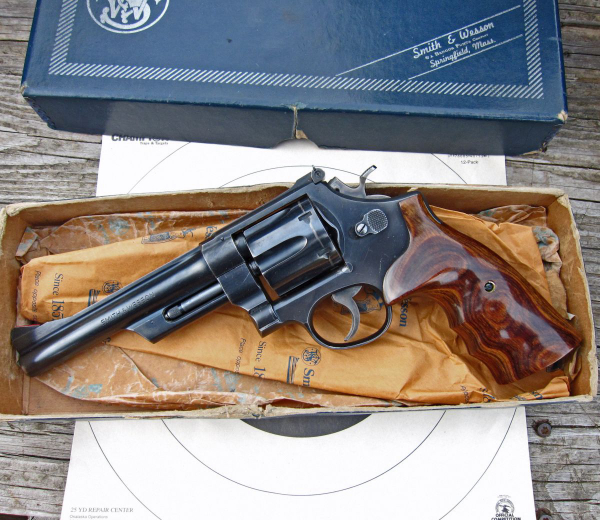
In the previous story, I told of my brother-in-law’s Highway Patrolman. That gun I could shoot quite well, unlike any of the previous dulled-down 44-frame 357s I’d shot before. When he saw I could shoot it well and desired to buy it, he just smiled.
He may even still have that gun today.
I also told the tale of the 28/25, a rebarreled Highway Patrolman fitted with the barrel and cylinder from a Model 25-2.
Don’t ask.
The more recent version, a six-inch Highway Patrolman, was given to me. It was supposed to have a “dark spot in the bore,” something I haven’t seen yet. The kindness shown me hasn’t been forgotten and this Highway Patrolman is still home.
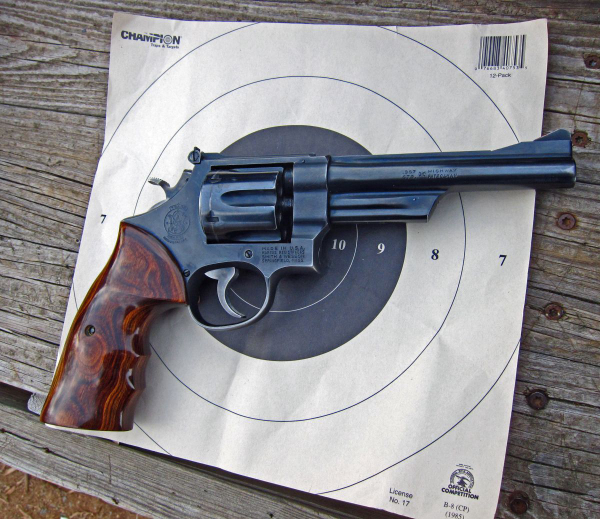
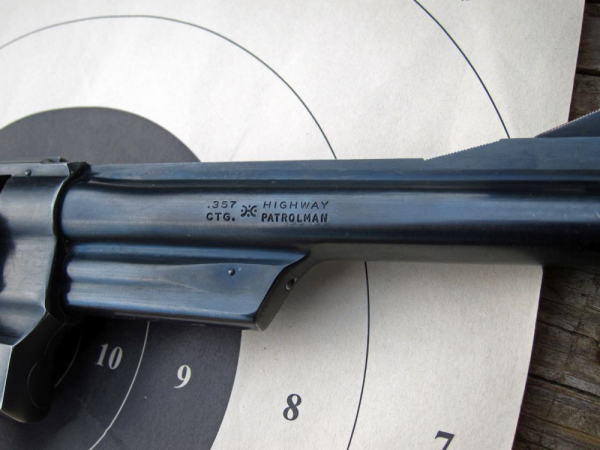
But I’d not fired it in years. Made between 1975 and 1977 (I haven’t “lettered” it), it’s completely stock, far as I can tell, with my addition of wonderful stocks from Eagle Grips.
This gun comes from the “pinned and recessed” era; there are folks new to these handguns, so that bears some explanation.
There is a transverse pin through the frame just over the barrel extension – the part with the forcing cone that extends through the frame. The idea was that the pin would prevent the barrel from unscrewing from being fired.
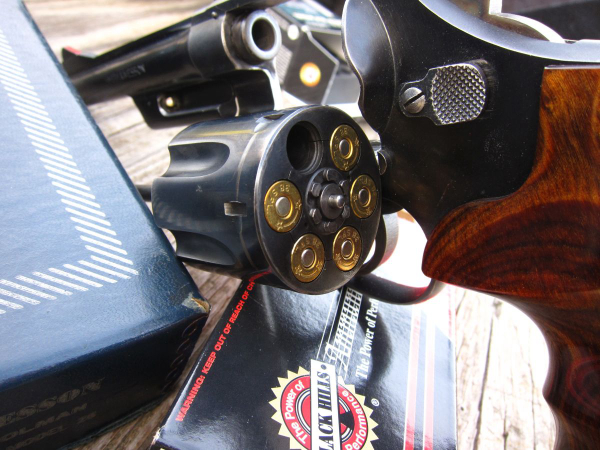
I’ve been told by a few that should know that the barrel retention pin didn’t – in the later years in which this gun was built. Guns from the 1980s lacked this superfluous feature.
The “recessed” refers to chambers that completely enclose the case head at the rear of the cartridge. Back when the 357 cartridge was first devised there was such a thing as “balloon head” cases. There was some fear they would blow out from the pressure – I’m not aware that they ever did. Rimfire revolvers are still seen with this feature.
As I was doing some range time recently, I had a precious bit of 38 and 357 and took the old gun out for a workout.
I found myself largely shooting the gun one-handed. I’m doing that a lot these days.
Old people have old ways.
The smooth stocks from Eagle Grips certainly didn’t abrade my hands. Even the magnum loads weren’t painful to shoot in this heavy-weight.
Weighing in at nearly 2 ¾ pounds empty, that’s no surprise. And remember that some officers carried these things 9-12 hours a day on 2 ¼” duty belts.
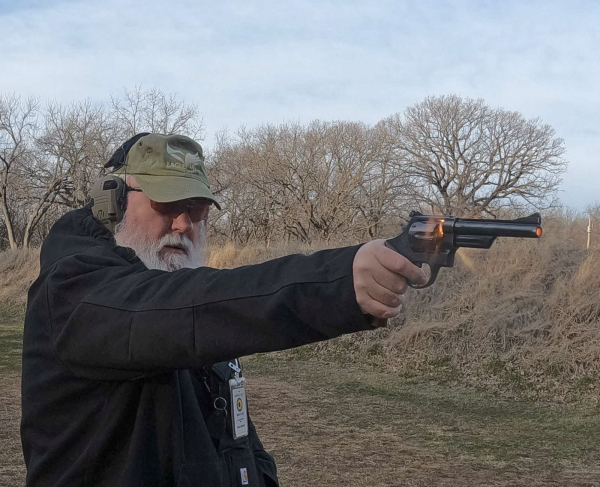
I shot Magnum loads first and found that fast-traveling lightweight bullets from Liberty Ammunition shot low. Their light-bullet high-velocity 38 loads likewise did; neither were far enough down to be a chore for the adjustable sights of the Highway Patrolman.
I settled down with some 148 grain Wadcutter loads from Black Hills Ammunition. Some of the finest ammo from one of the best ammo makers we have, the loads clustered into the top third or so of the B-8 “Timed & Rapid Fire” repair center from about fifteen yards.
I won’t win matches with it, but it’s great fun to shoot.
If you like big revolvers that have great ammo flexibility, you may want to look for one of these (sadly) discontinued revolvers.
I’ve got mine.
-- Rich Grassi